Peter Lamoureaux, a strong oarsman, commissioned his friend John Brooks to create a pulling boat that he might race and then, after the competition, row out to an island with his wife for a picnic. The resulting Peregrine 18 has proven fast, easy to row, and handsome.Preliminary sketches indicate that this design began, more or less, as a Whitehall boat; but the finished drawings reveal something quite different. The designer’s friend and client needed a boat that could average about 6 knots around a 3-mile racecourse, which included tight turns, in sometimes choppy water. He started by drawing a nearly semicircular mid section for low wetted surface. Highly flared sides would increase secondary stability, and they would provide a spread of nearly 4' at the rails for the oarlocks. Brooks reckoned that a working waterline of about 18' would offer the optimum length for an athletic one-person-power engine. A shorter waterline would waste energy through excessive wave generation. A longer boat might suffer from too much wetted surface and hull weight.In order to reduce wetted surface yet more, and to allow for quick turns at the marks, he introduced a little rocker (convex longitudinal curvature) into the keel. For the same reasons, he drew a short skeg with an end plate running along its lower edge. This arrangement provides adequate directional stability at speed, yet it stalls readily during tight turns. In this circumstance, stalling is a good thing.
Join The Conversation
We welcome your comments about this article. To include a photo with your remarks, click Choose File below the Comment box.

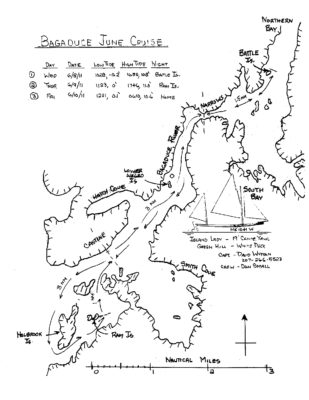

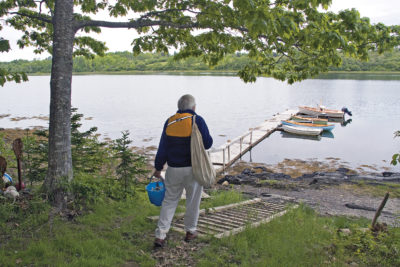
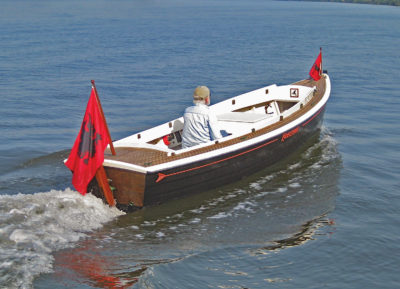
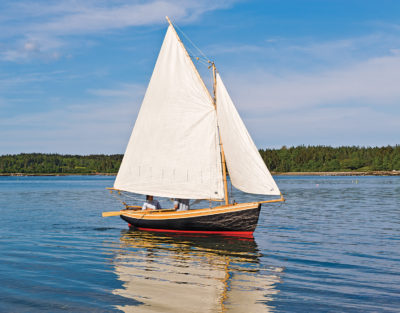
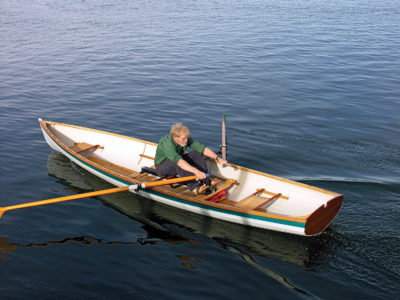
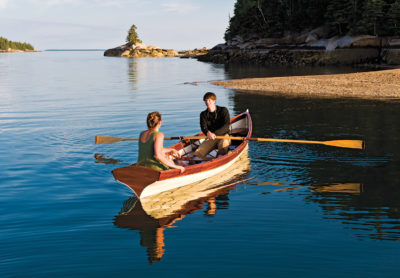
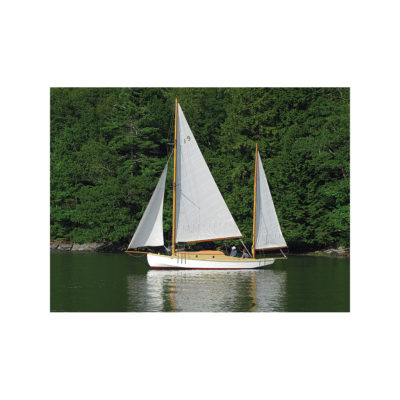
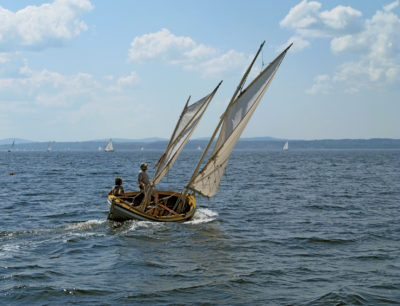
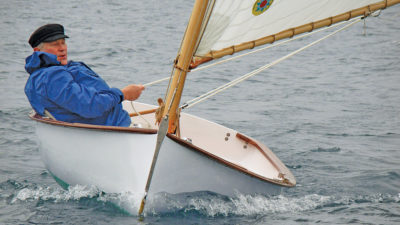
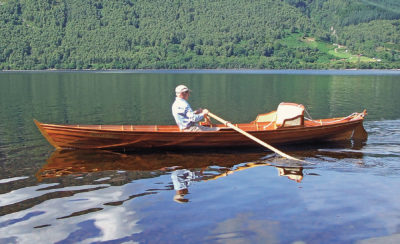
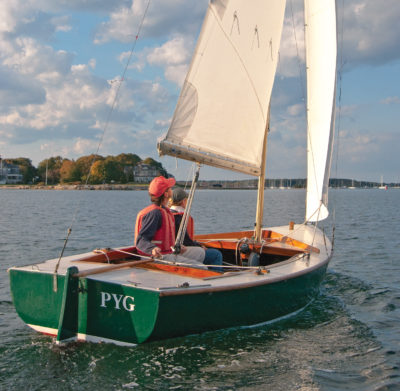
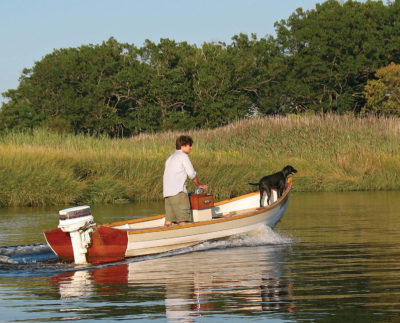

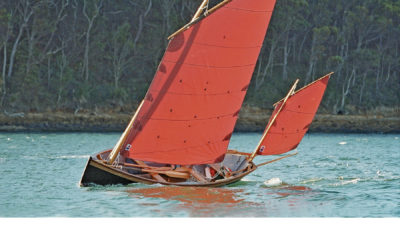
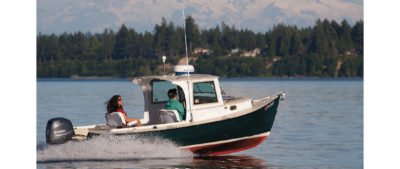
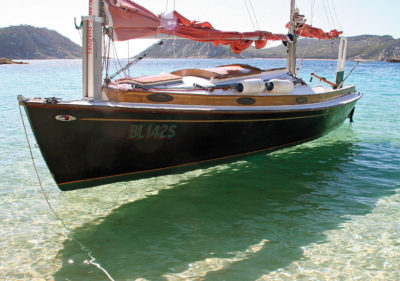
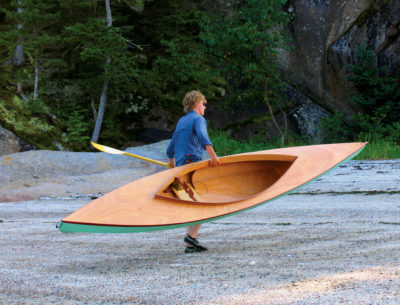
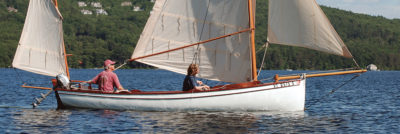
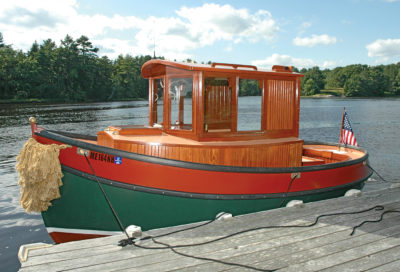
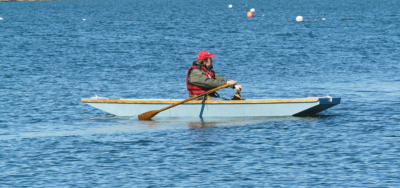
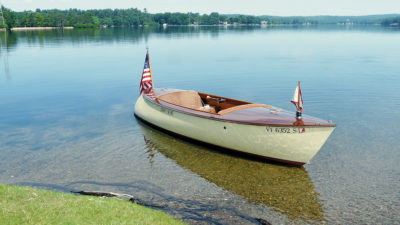
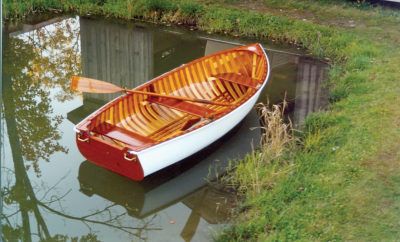
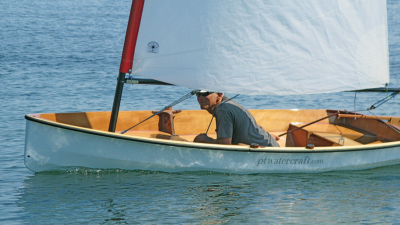
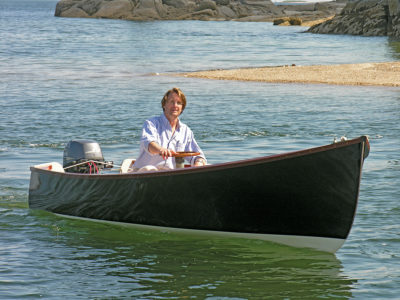
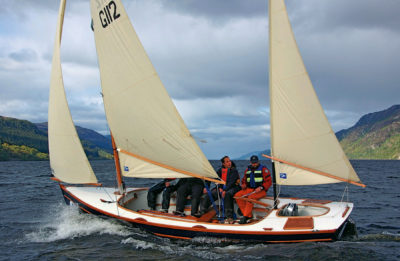
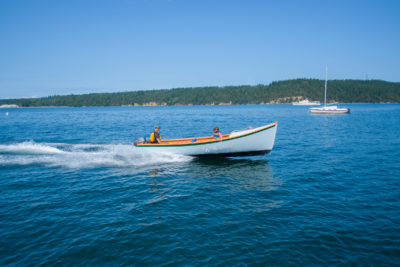
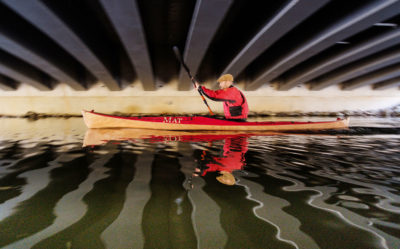
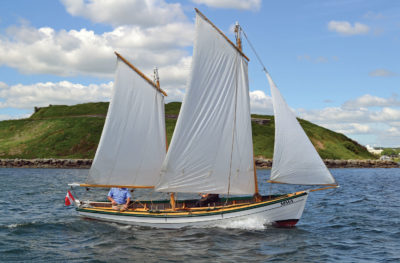
I like the design, a Whitehall always inspired. Have you considered a small sail? My reasoning, I unfortunately damaged both shoulders, rowing consistently may be a thing of the past. I do like the idea of allowing Mother Nature to help with a traveling.